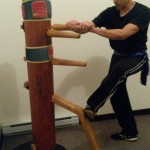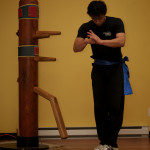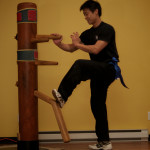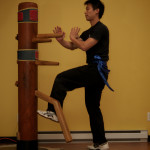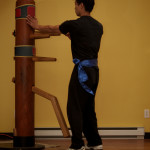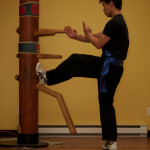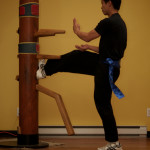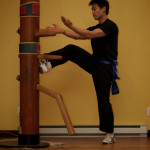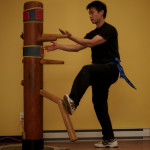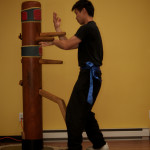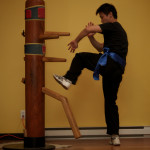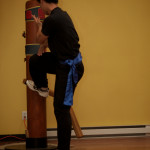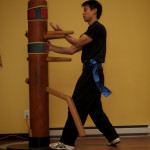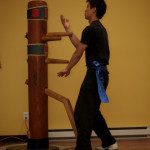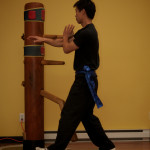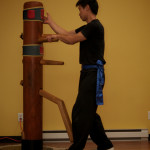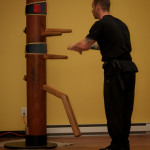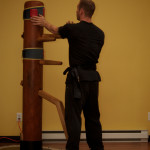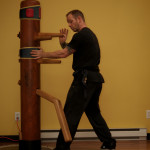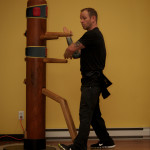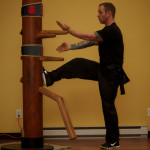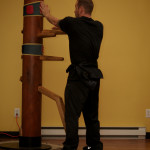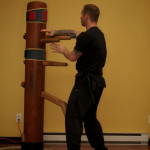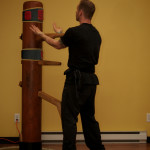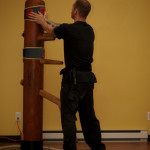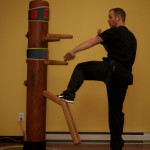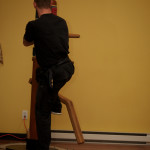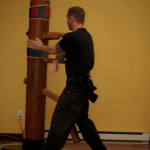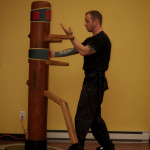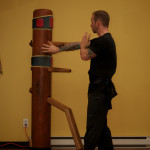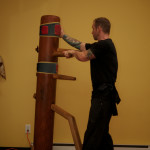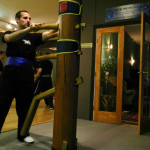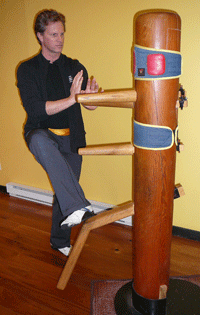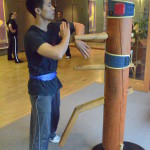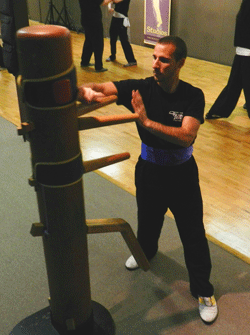On February 23, 2019, in Sifu’s office at Medicine Moves Studio on 843 Fisgard St., Victoria, green sash student Eben Hensby sat down for a conversation/interview with Sifu Jim Kragtwyk on the topic of the Mook Jong. The audio and transcriptions are included below, in three files (in mp3 and pdf formats).
Part 1: The Mook Jong form — Transcript
Part 2: Training tool, the progression, bouncing off — Transcript
Part 3: Air Jong, and forms — Transcript
Mook Yan Jong – Wooden Man Form: 108 Moves
Mook Yan Jong is a training device precious to the Wing Chun system. It is the final stage of training for hand and foot techniques. Therefore, those who have studied this form must have achieved a high level of proficiency in the art of Wing Chun. The Jong techniques include practically all of the hand and foot techniques.
The Mook Yan Jong engages these techniques in various combinations and applications. These can be broken down into three categories: 1) neutralization maneuver; 2) confrontation and counter-attacks; and 3) blatant attacks. Precision and understanding are of the utmost importance. The form trains one to respond to an attack with a counter that is not only instantaneous and spontaneous, but the most appropriate and effective in any given situation. Some techniques may not seem to conform to Wing Chun’s theory of economy of motion, but they are actually to compensate for the fact that the Jong itself doesn’t turn as a real opponent would when struck or blocked with force. Remember it is a training device, not a real fight!
The Jong also teaches the proper hand and foot distancing between the student and an opponent so as to prevent jamming of hand/leg techniques and the resultant blocking of chi (aka qi).
When studying the Jong, importance is placed on the understanding and sequence of movements and mastering them fully. Approach the Jong as one would an opponent, with the intent of mastering it and not vice versa. Understand and master each section before moving to the next one. Allow time for understanding of each section and applying it to your chi sau. You can also practice this form “empty-handed,” without the use of the Jong, in order to realize the full potential of your movements. Both modes are essential to proper training.

